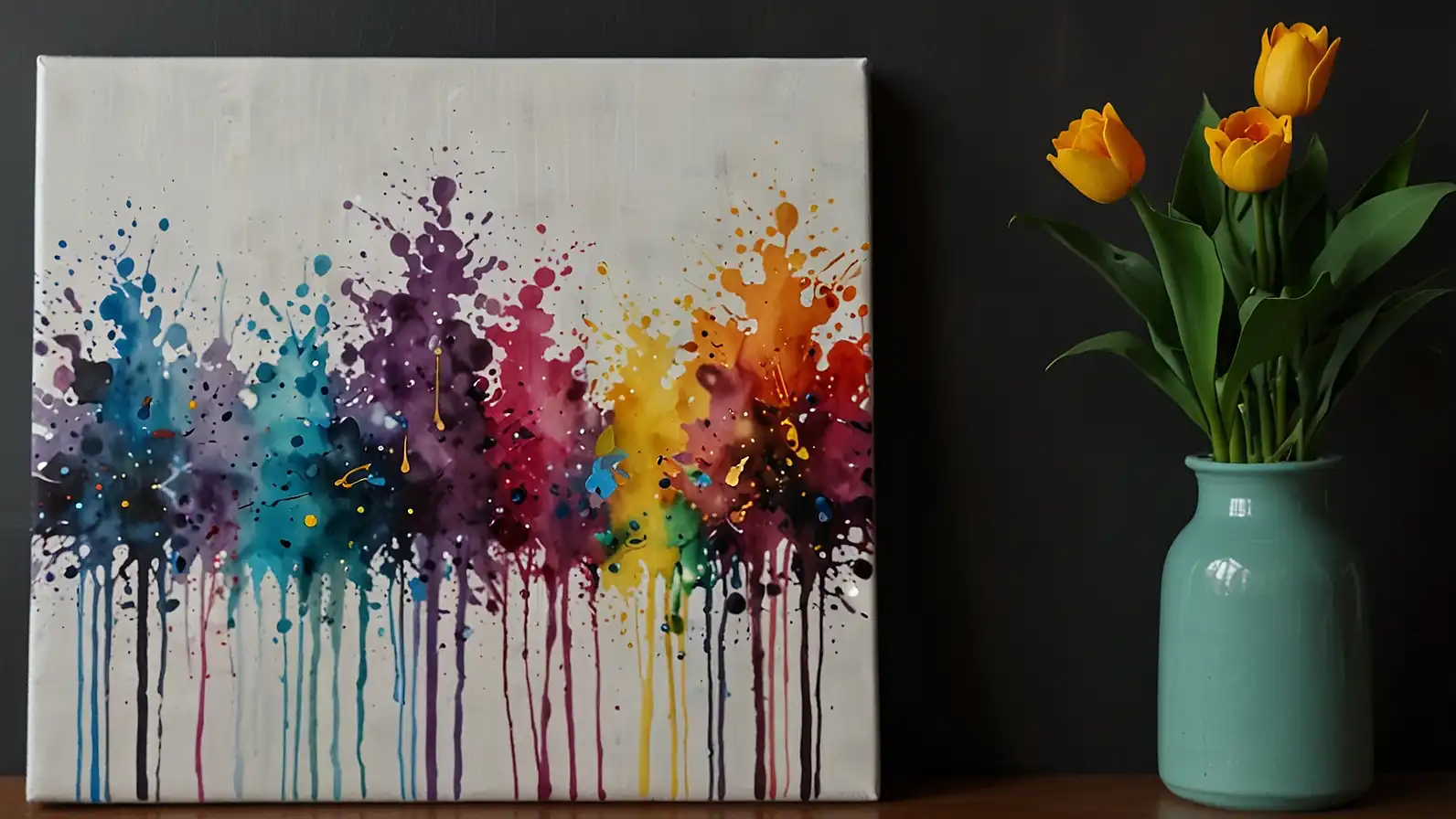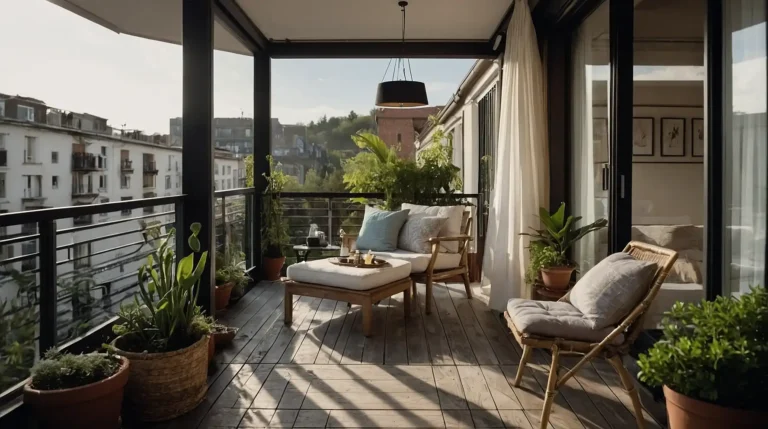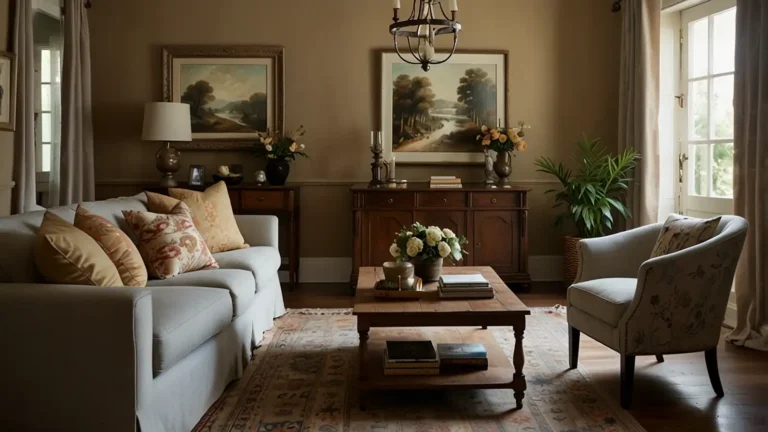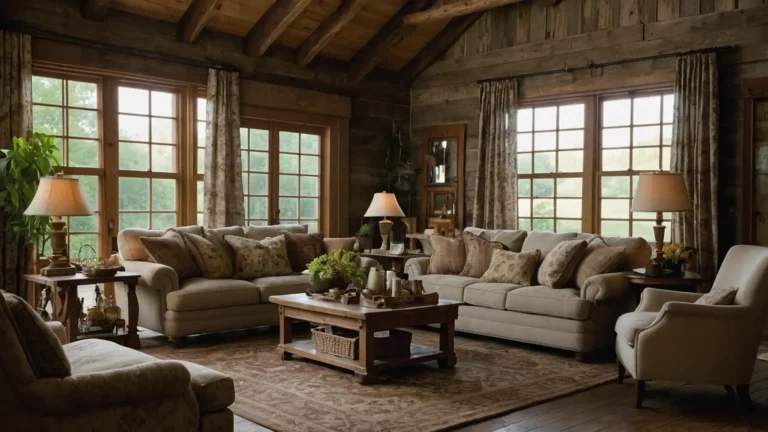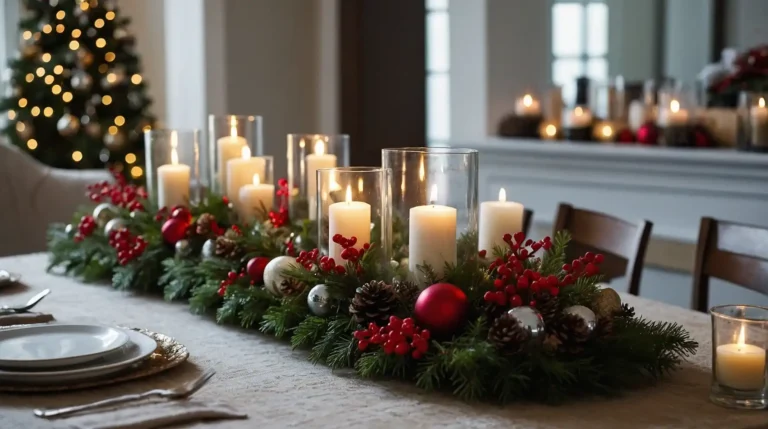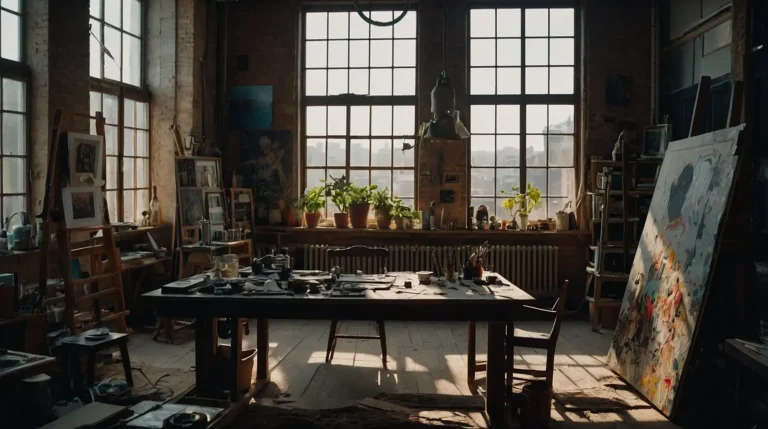21 DIY Canvas Painting Ideas For Beginners
Canvas painting offers a perfect creative outlet that requires no previous experience to start creating beautiful art.
You can express yourself while learning new techniques and building confidence.
These beginner-friendly projects focus on simple techniques that produce stunning results.
You’ll discover that creating meaningful art doesn’t require years of training.
Grab your brushes and paints to explore these accessible ideas that guarantee success for first-time painters.
1: Simple Sunset Gradient
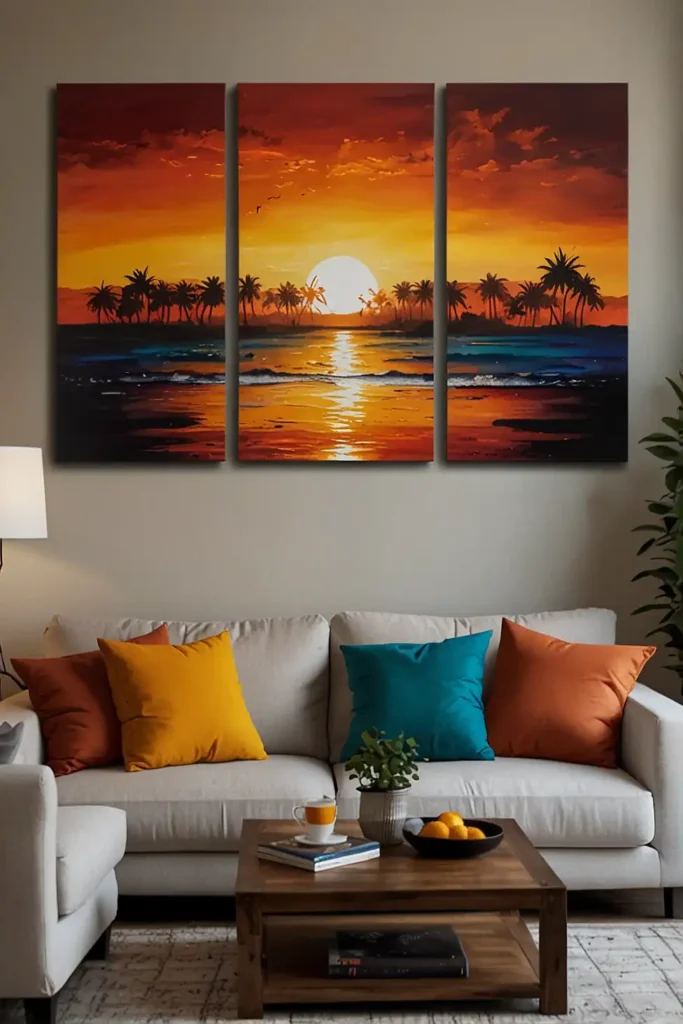
You can create breathtaking sunset paintings using just three colors blended horizontally across your canvas.
Start with yellow at the bottom, blend into orange, then finish with deep pink or purple.
Work quickly while the paint remains wet for smooth transitions.
Use a large, flat brush to blend colors where they meet naturally.
This technique teaches color mixing while producing impressive results.
You’ll master gradient blending that applies to countless future painting projects.
2: Abstract Geometric Shapes
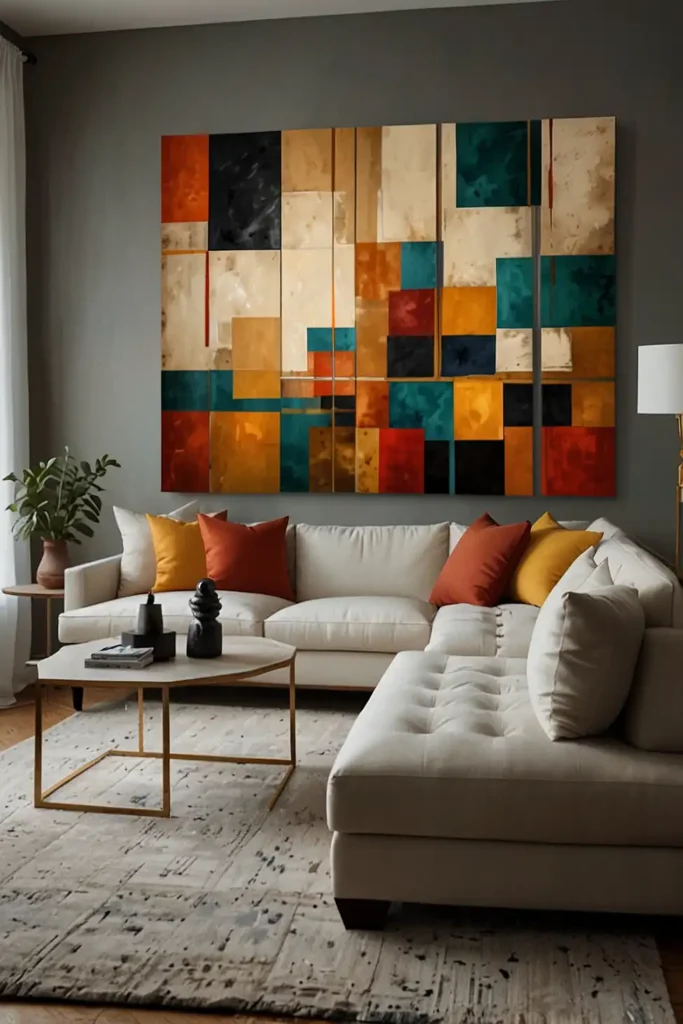
Create modern abstract art using painter’s tape to mask off geometric shapes before applying bold colors.
You can design triangles, circles, or squares in contrasting hues for striking compositions.
Apply tape firmly to prevent paint bleeding underneath. Choose colors that complement or contrast dramatically for maximum visual impact.
Remove tape while paint is slightly damp for clean edges.
You’ll have professional-looking abstract art that impresses without requiring drawing skills.
3: Minimalist Mountain Silhouettes
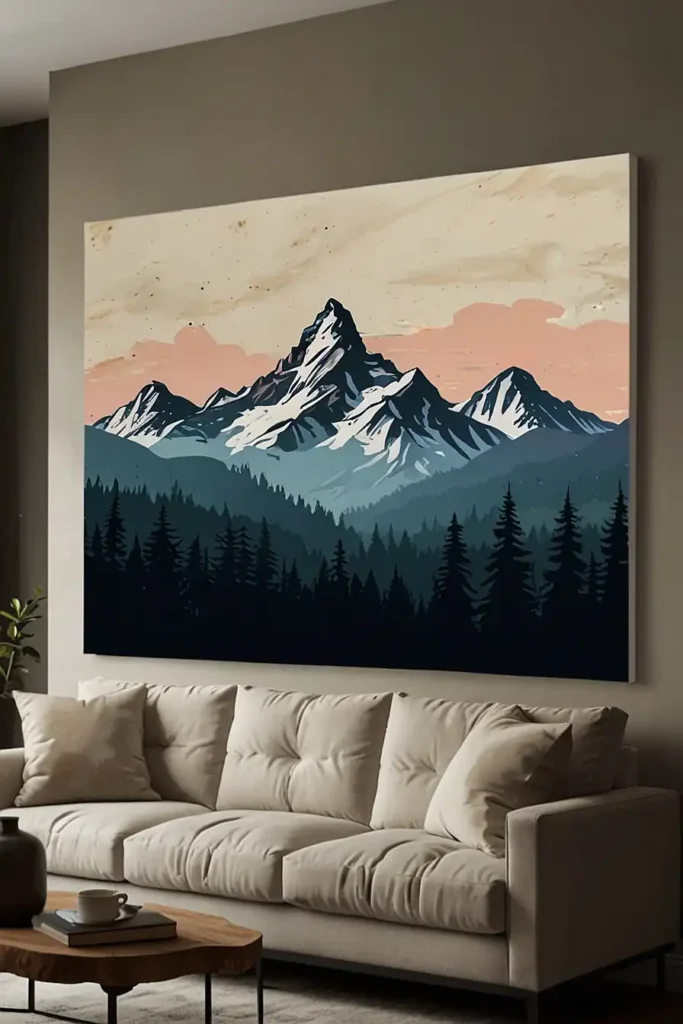
You can paint simple mountain ranges using dark colors against lighter sky backgrounds.
Start with basic triangular shapes that overlap to create depth and dimension.
Use a palette knife or flat brush to create clean mountain edges. Layer mountains from light to dark for realistic depth effects.
Add simple details like snow caps or trees for extra interest. You’ll create serene landscapes that look complex but use basic shapes.
4: Textured Tree Paintings
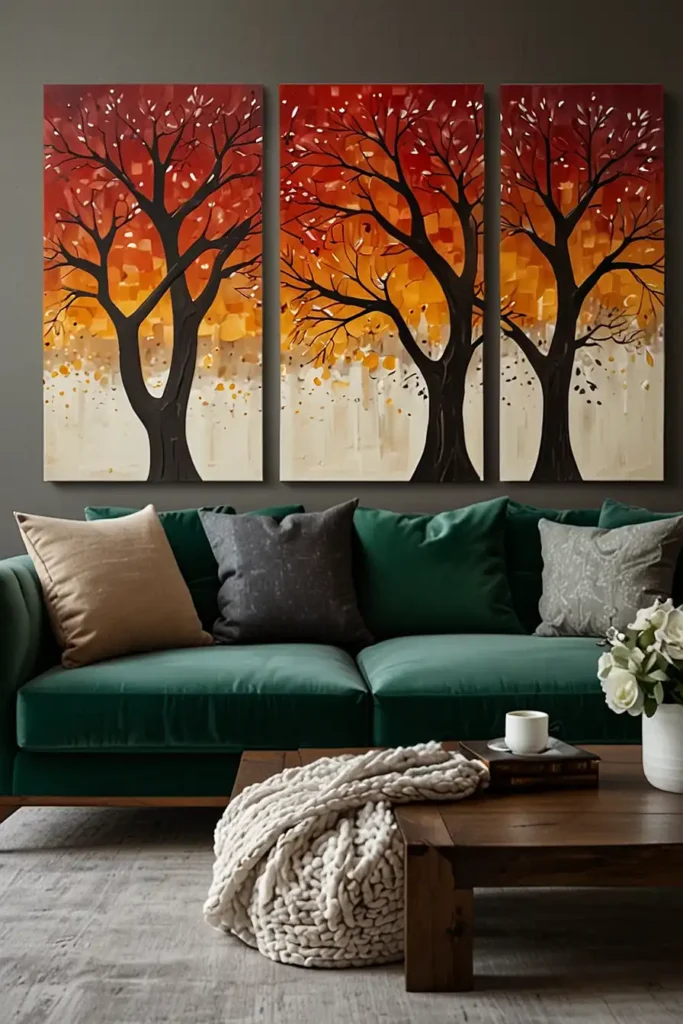
Create stunning tree art using unconventional tools like sponges, plastic wrap, or palette knives to add realistic bark textures.
You can build layers of color for authentic-looking tree trunks.
Start with base colors then add texture using dabbing motions. Experiment with different tools to discover unique texture effects that appeal to you.
Focus on one main tree for simplicity and maximum impact.
You’ll learn texture techniques while creating natural-looking artwork that impresses viewers.
5: Ocean Wave Abstracts
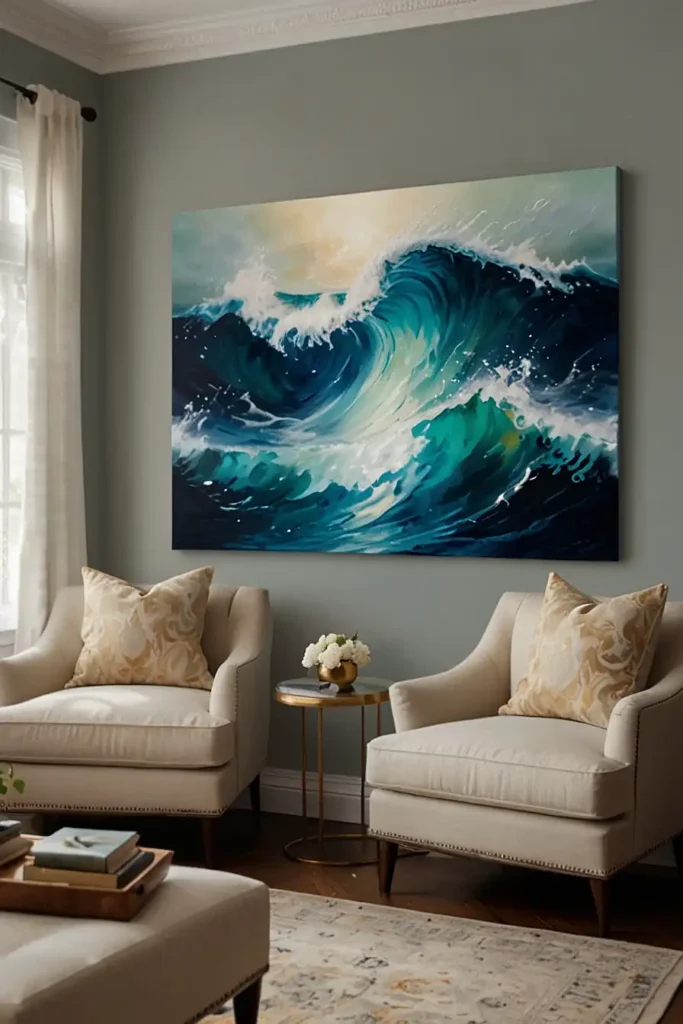
You can capture ocean movement using flowing brush strokes in blues, whites, and greens that suggest water without realistic detail.
This style emphasizes movement over precision.
Use horizontal brush strokes to suggest wave motion. Blend colors while wet to create natural water-like transitions between shades.
Add white highlights for foam and wave caps. You’ll create dynamic seascapes that feel alive while practicing fluid brush techniques.
6: Colorful Flower Silhouettes
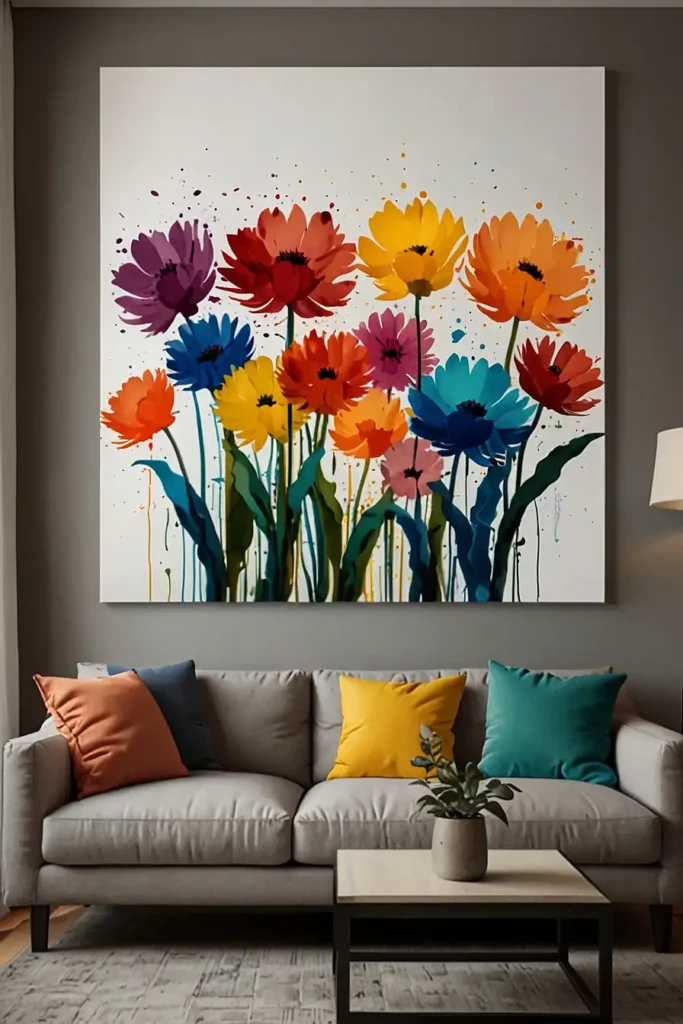
Paint simple flower shapes in solid colors against contrasting backgrounds for bold, graphic floral art.
You can choose any flower type and simplify it to basic shapes.
Focus on overall flower shapes rather than detailed petals. Use bright, cheerful colors that make you happy and energized.
Layer flowers at different heights for visual interest. You’ll create cheerful art that brightens any space while building shape recognition skills.
7: Galaxy Splatter Paintings
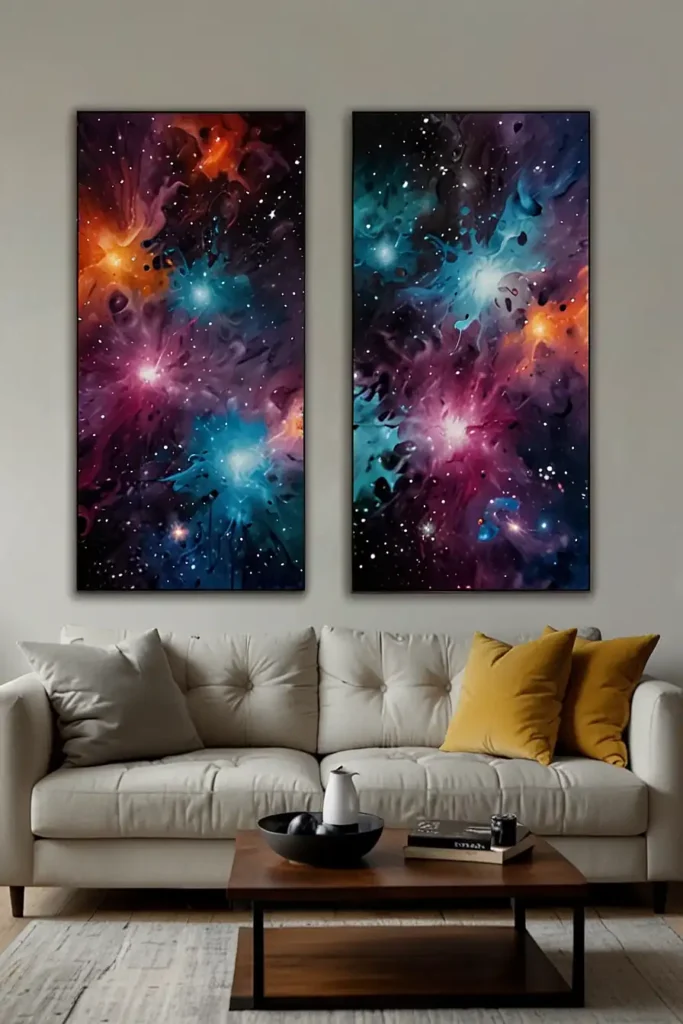
You can create magical galaxy effects using splatter techniques with white paint over dark blue and purple backgrounds.
This fun method produces unpredictable, beautiful results.
Paint your background in deep space colors first. Use an old toothbrush to splatter white paint for realistic star effects.
Add colorful nebula clouds using sponge dabbing techniques.
You’ll have cosmic artwork that looks professional while learning playful painting methods.
8: Mandala Circle Patterns
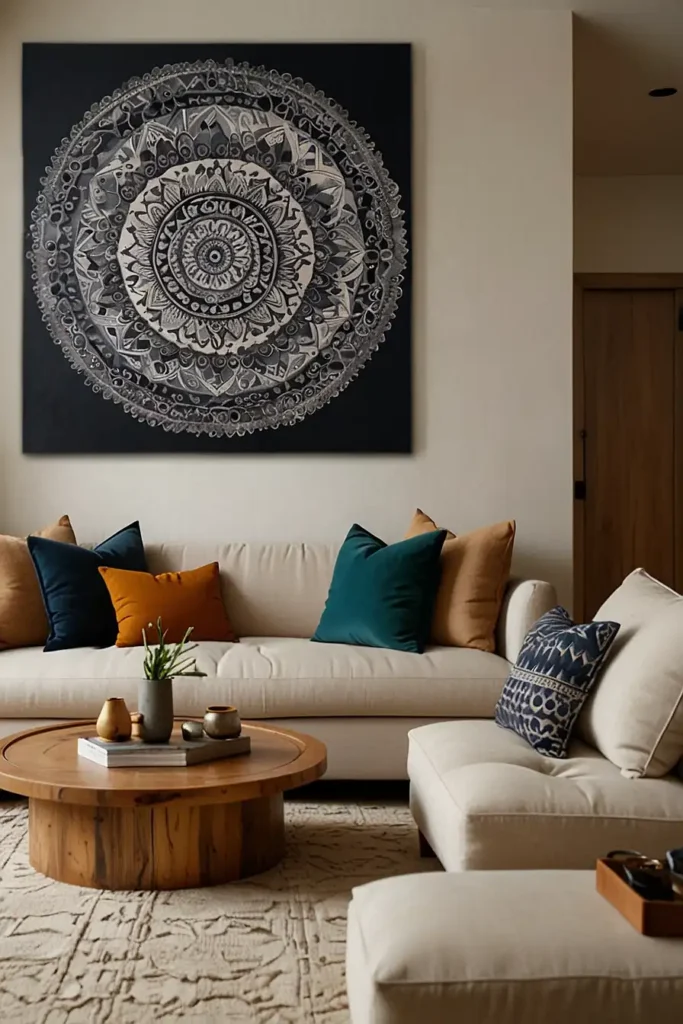
Create meditative mandala art by painting repetitive patterns in concentric circles from the center outward.
You can use stencils or freehand simple shapes for relaxing creative sessions.
Start with a center point and work outward systematically. Choose colors that flow harmoniously or create bold contrasts based on preferences.
Use small brushes for detailed work and take breaks frequently. You’ll develop patience and precision while creating meaningful spiritual artwork.
9: Color Block Abstracts
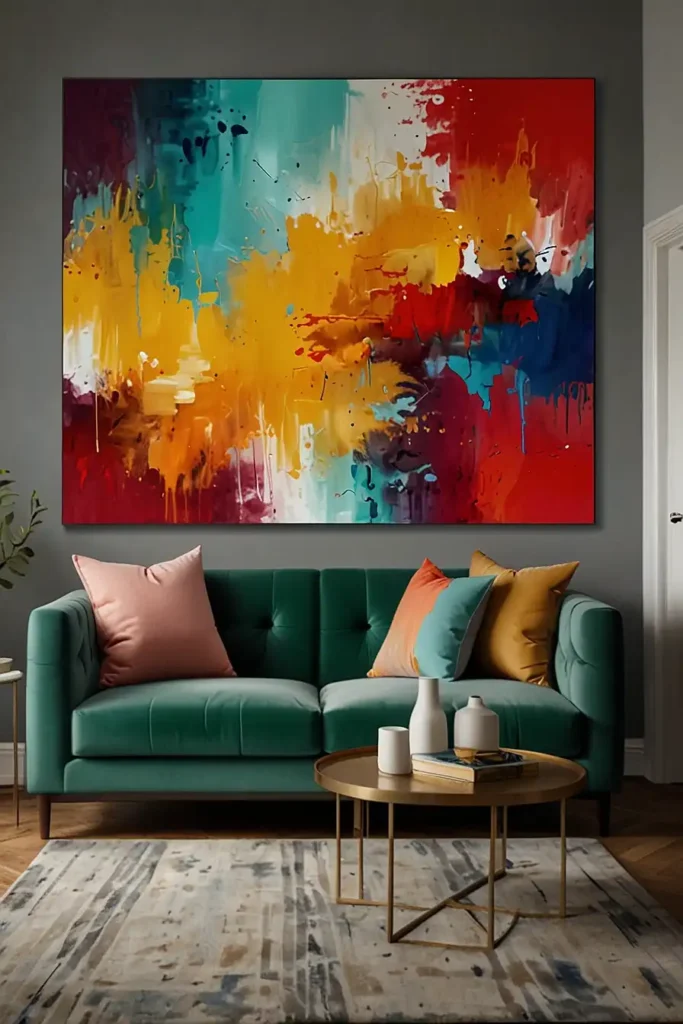
You can design modern abstract paintings using large blocks of solid color arranged in pleasing compositions.
This minimalist approach emphasizes color relationships over complex techniques.
Choose three to five colors that work well together. Paint clean rectangles or squares that touch or overlap slightly for cohesive designs.
Vary the sizes of your color blocks for visual balance. You’ll learn color theory while creating sophisticated modern art for any space.
10: Simple Bird Silhouettes
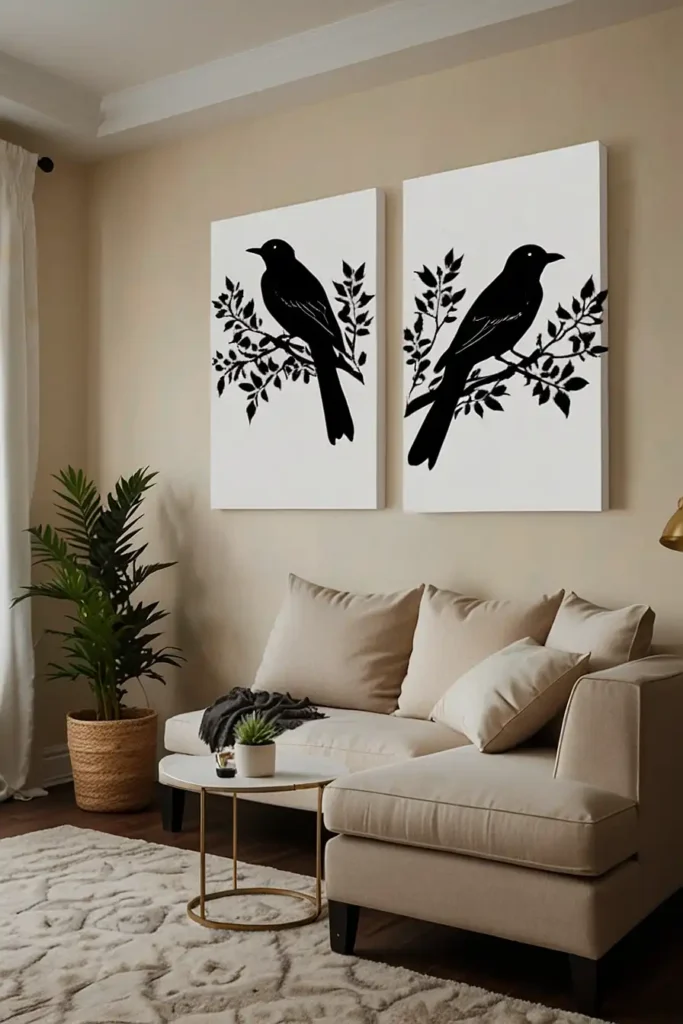
Paint graceful bird shapes in flight using basic brushstrokes that capture movement and freedom.
You can create entire flocks or focus on single birds for different effects.
Start with simple curved lines for wings and bodies. Use flowing motions to suggest flight rather than detailed anatomical accuracy.
Work in monochromatic colors or add subtle gradients.
You’ll practice gesture drawing while creating uplifting artwork that suggests motion and freedom.
11: Rainbow Stripe Patterns
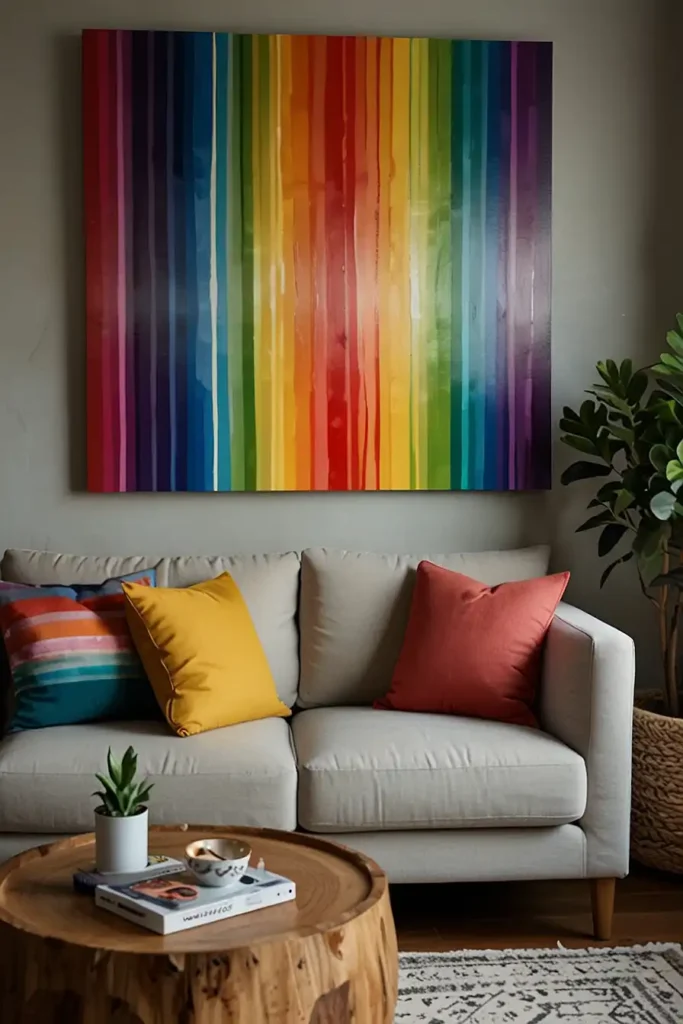
You can create joyful rainbow art using parallel stripes in spectrum order or your own creative color combinations.
This project teaches color progression and brush control.
Use painter’s tape for straight lines or paint freehand for organic effects. Work from light to dark colors to prevent muddying.
Experiment with different stripe widths and angles. You’ll master brush control while creating vibrant art that brings happiness to any room.
12: Drip Painting Techniques
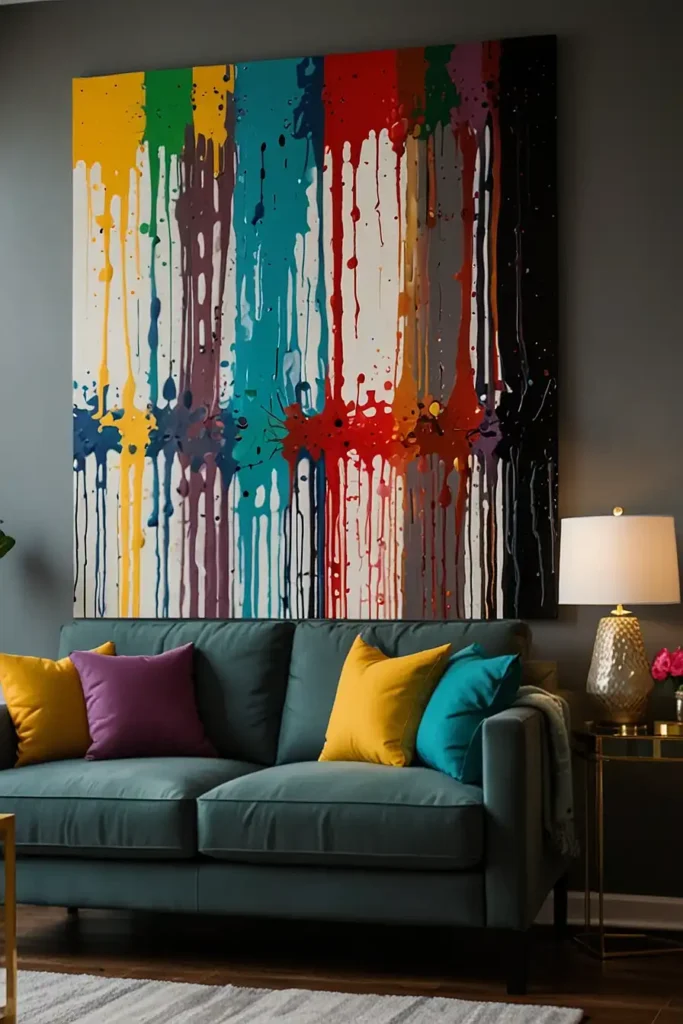
Create dynamic abstract art by letting paint drip naturally down your canvas while tilting it in different directions.
You can control the flow while embracing happy accidents.
Thin your paint slightly with water for better flow. Start with one color and add others while the first layer remains wet.
Rotate your canvas to guide drip directions naturally.
You’ll learn to work with gravity while creating unique abstracts that celebrate spontaneity.
13: Cactus Desert Scenes
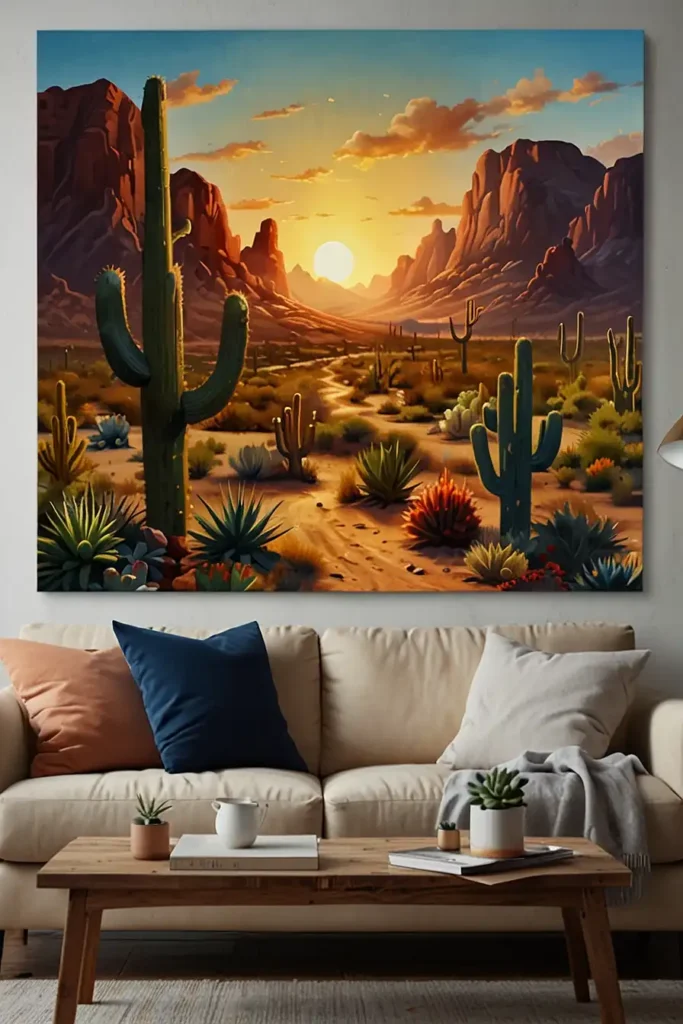
You can paint charming desert landscapes using simple cactus shapes against warm background colors.
These friendly plants are forgiving subjects for beginning painters.
Use basic oval and cylinder shapes for different cactus types. Add simple flower blooms in bright colors for extra charm and appeal.
Paint sandy backgrounds in warm earth tones.
You’ll practice shape painting while creating cheerful southwestern-style art that brings warmth indoors.
14: Watercolor-Style Washes
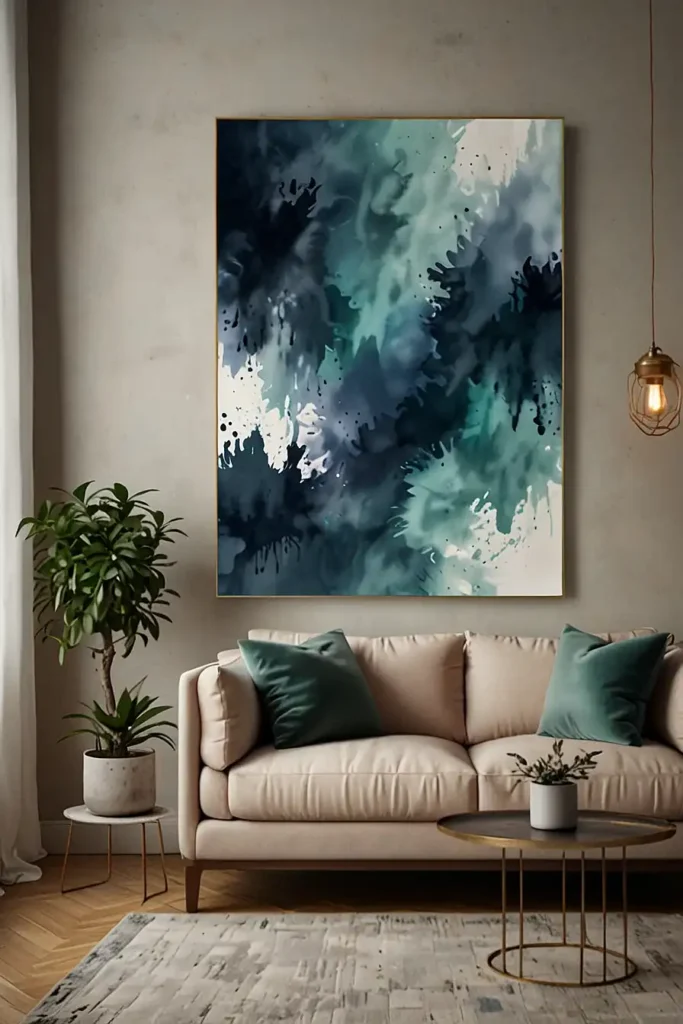
Create soft, dreamy effects using watered-down acrylic paints that mimic watercolor techniques on canvas.
You can achieve gentle, flowing color transitions with this approachable method.
Wet your canvas slightly before applying diluted colors. Let colors blend naturally while controlling their flow with brush guidance.
Work quickly while the surface remains damp. You’ll learn wet-on-wet techniques while creating ethereal artwork with gentle, romantic appeal.
15: Polka Dot Celebrations
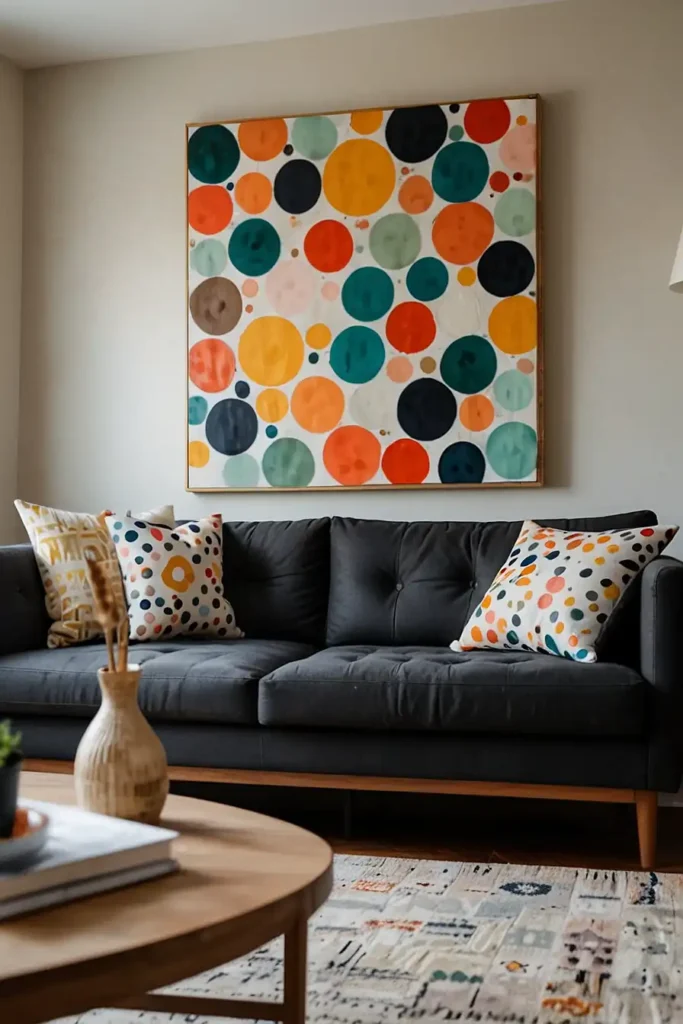
You can design playful polka dot patterns using circular stencils or household items like bottle caps and coins.
This simple technique creates cheerful, rhythm-filled compositions.
Choose dot sizes that create pleasing proportions on your canvas. Vary colors randomly or create organized color patterns based on preferences.
Overlap dots partially for added visual interest and depth. You’ll practice precision while creating happy artwork that brings smiles and energy.
16: Leaf Print Impressions
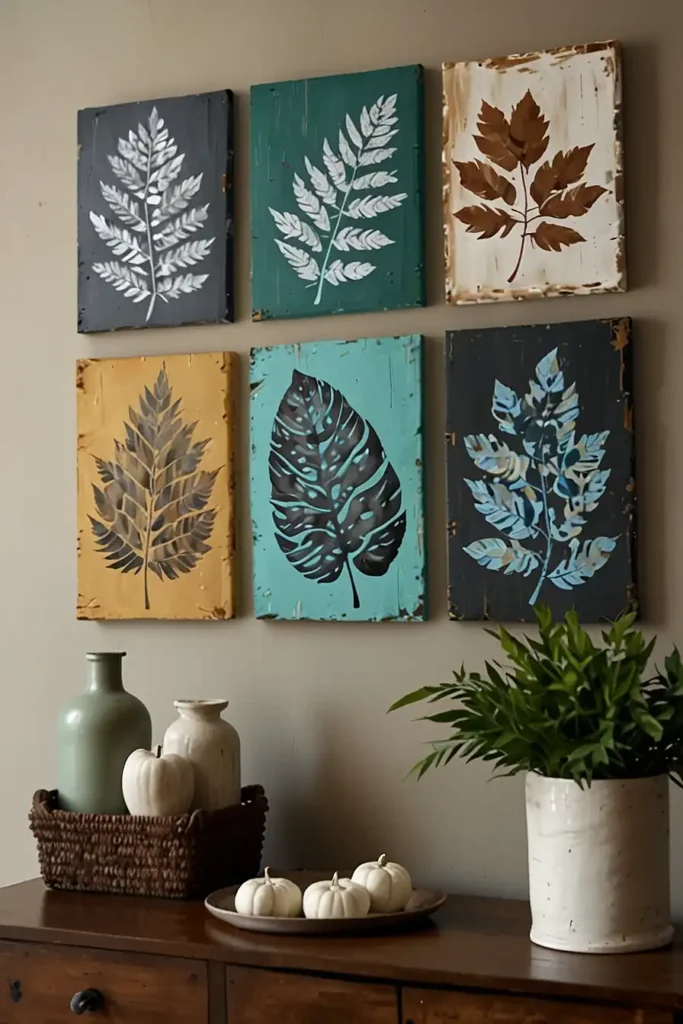
Create natural art by pressing real leaves into wet paint to leave their shapes and textures. You can build entire compositions using different leaf types and colors.
Apply paint evenly to your canvas then press leaves firmly. Remove carefully to reveal detailed natural impressions with authentic textures.
Use autumn colors for seasonal appeal or unexpected hues for modern effects. You’ll connect with nature while learning printing techniques.
17: Color Wheel Explorations
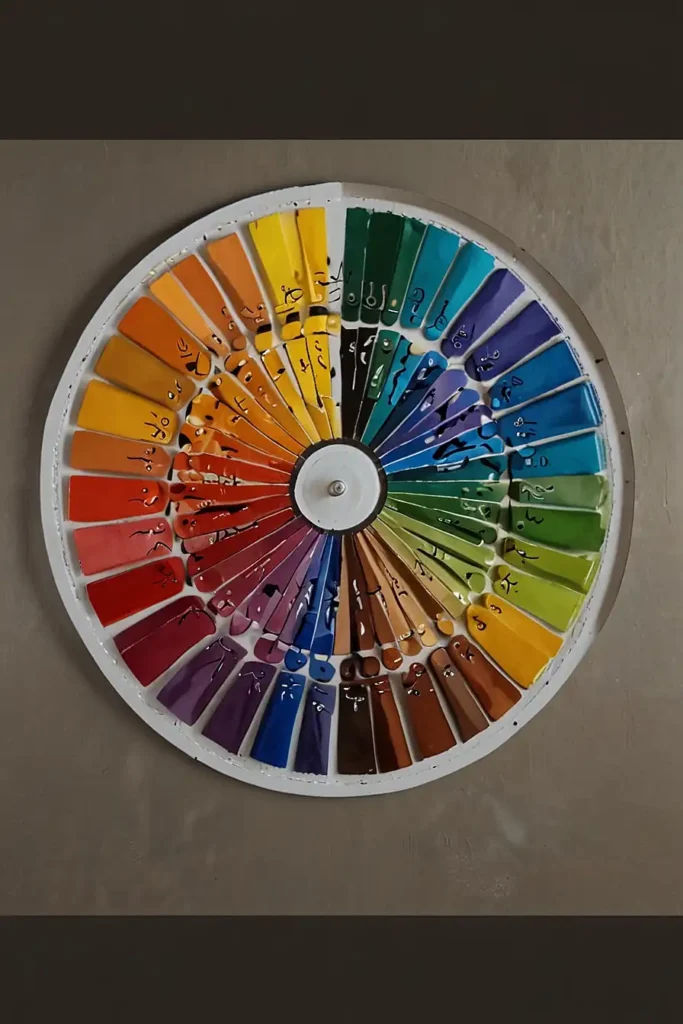
You can paint educational color wheels that teach color mixing while creating beautiful, organized artwork.
This project builds fundamental color knowledge for future paintings.
Start with primary colors and mix secondaries systematically. Paint each color segment cleanly for clear educational value and visual appeal.
Add tertiary colors for complete wheels with rich color relationships. You’ll master color theory while creating useful reference art for your studio.
18: Simple Portrait Silhouettes
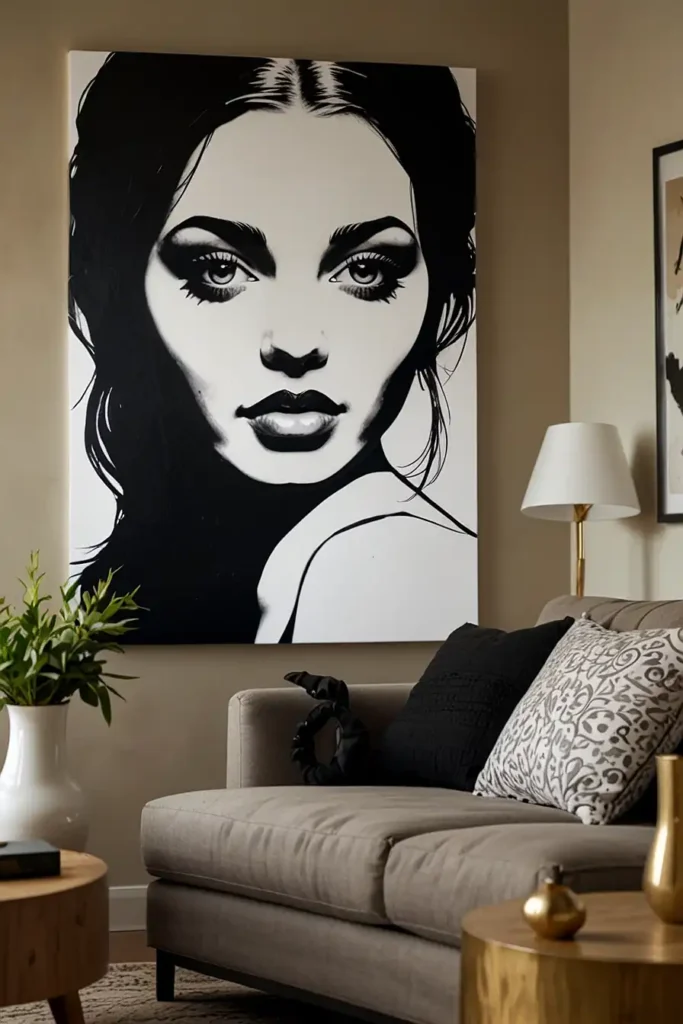
Paint profile silhouettes of family members or friends using solid colors against contrasting backgrounds.
You can create meaningful art without requiring detailed facial features.
Work from photographs to capture accurate profile shapes. Focus on overall head and shoulder outlines rather than internal details.
Choose colors that reflect personality or simply please your aesthetic sense.
You’ll practice observation skills while creating personal, meaningful artwork.
19: Fabric Texture Experiments
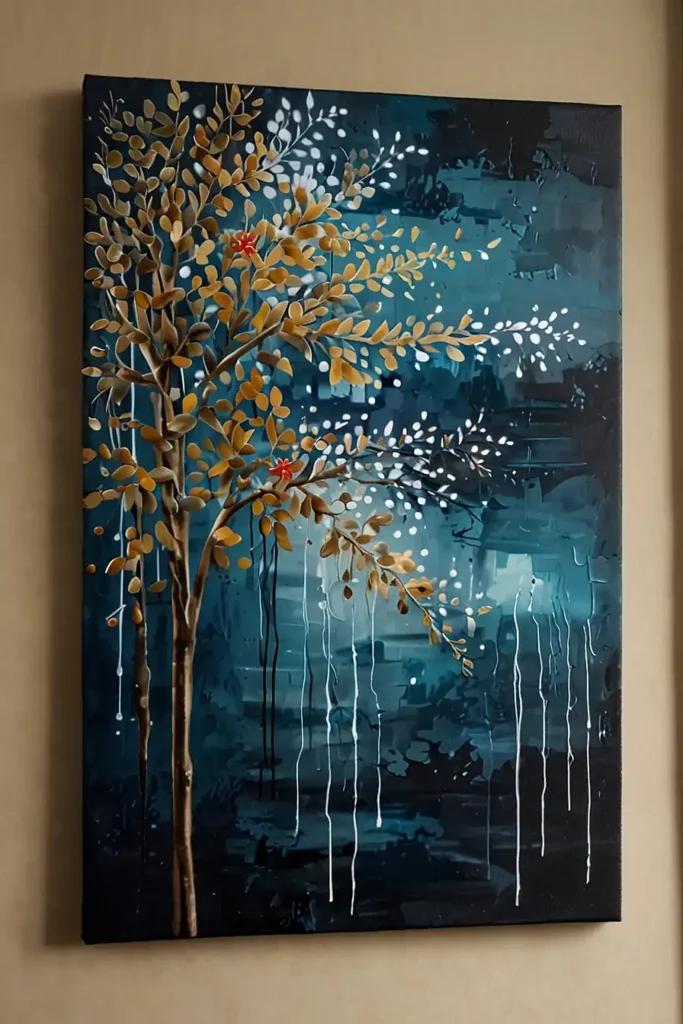
You can create interesting textures by pressing fabric into wet paint then removing it to reveal textile patterns.
Different fabrics produce unique effects worth exploring.
Try lace, burlap, or corduroy for varied texture results. Press firmly then lift straight up to avoid smearing your textural impressions.
Build compositions using multiple fabric textures in different colors. You’ll discover new mark-making tools while creating richly textured abstract artwork.
20: Ombre Gradient Techniques
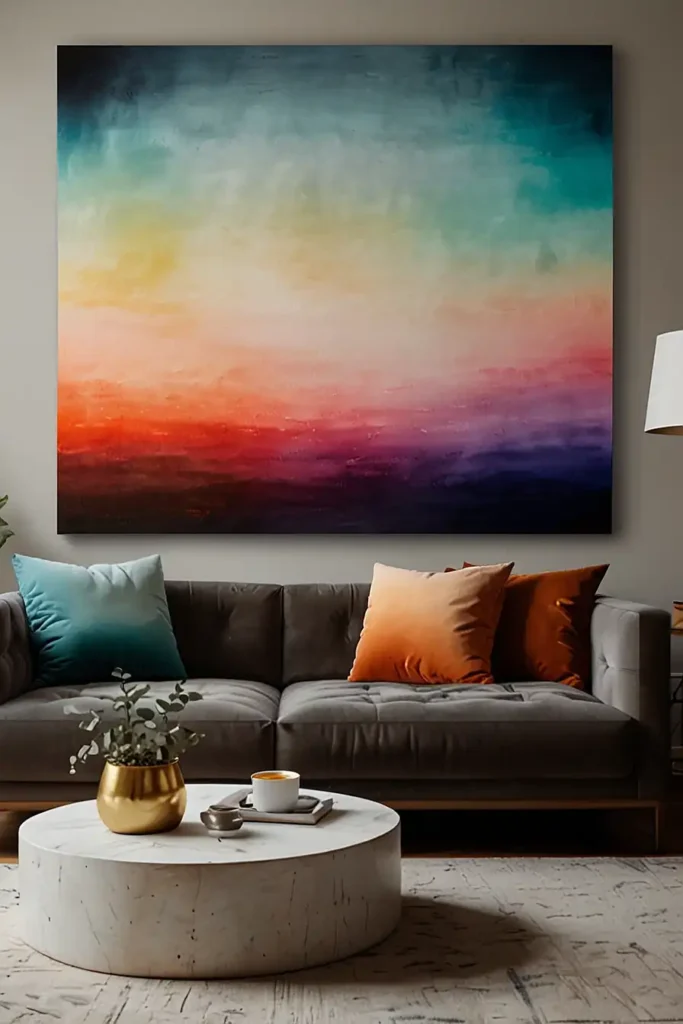
Create smooth color transitions that fade gradually from dark to light across your entire canvas. You can master this popular technique with practice and patience.
Work quickly while paint remains blendable for smoothest transitions. Use long, horizontal brush strokes to maintain consistent gradient flow.
Choose colors that blend naturally together for easiest success. You’ll develop blending skills while creating sophisticated artwork with professional appeal.
21: Mixed Media Collages
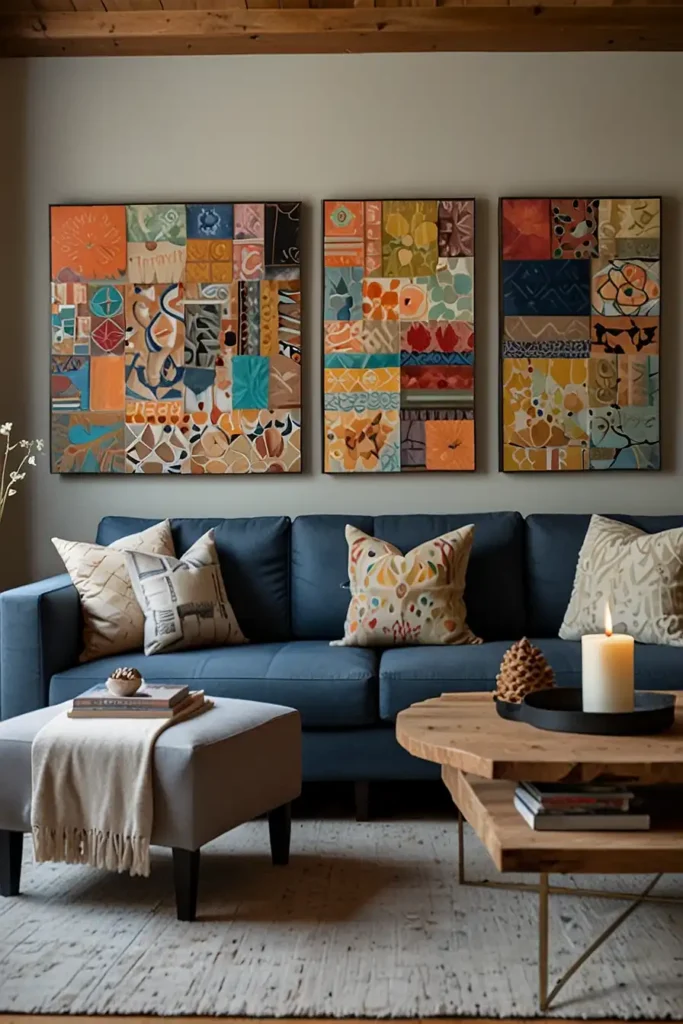
You can combine painting with collage elements like magazine clippings, tissue paper, or natural materials for unique mixed media artwork that tells personal stories.
Apply paint first then add collage elements with gel medium. Build layers gradually for rich, complex compositions with personal meaning.
Experiment with different material combinations to discover your preferences.
You’ll expand your artistic vocabulary while creating one-of-a-kind expressive artwork.
Conclusion
These beginner-friendly canvas painting ideas provide endless creative possibilities for new artists.
You’ll build confidence while discovering your unique artistic voice through experimentation.

